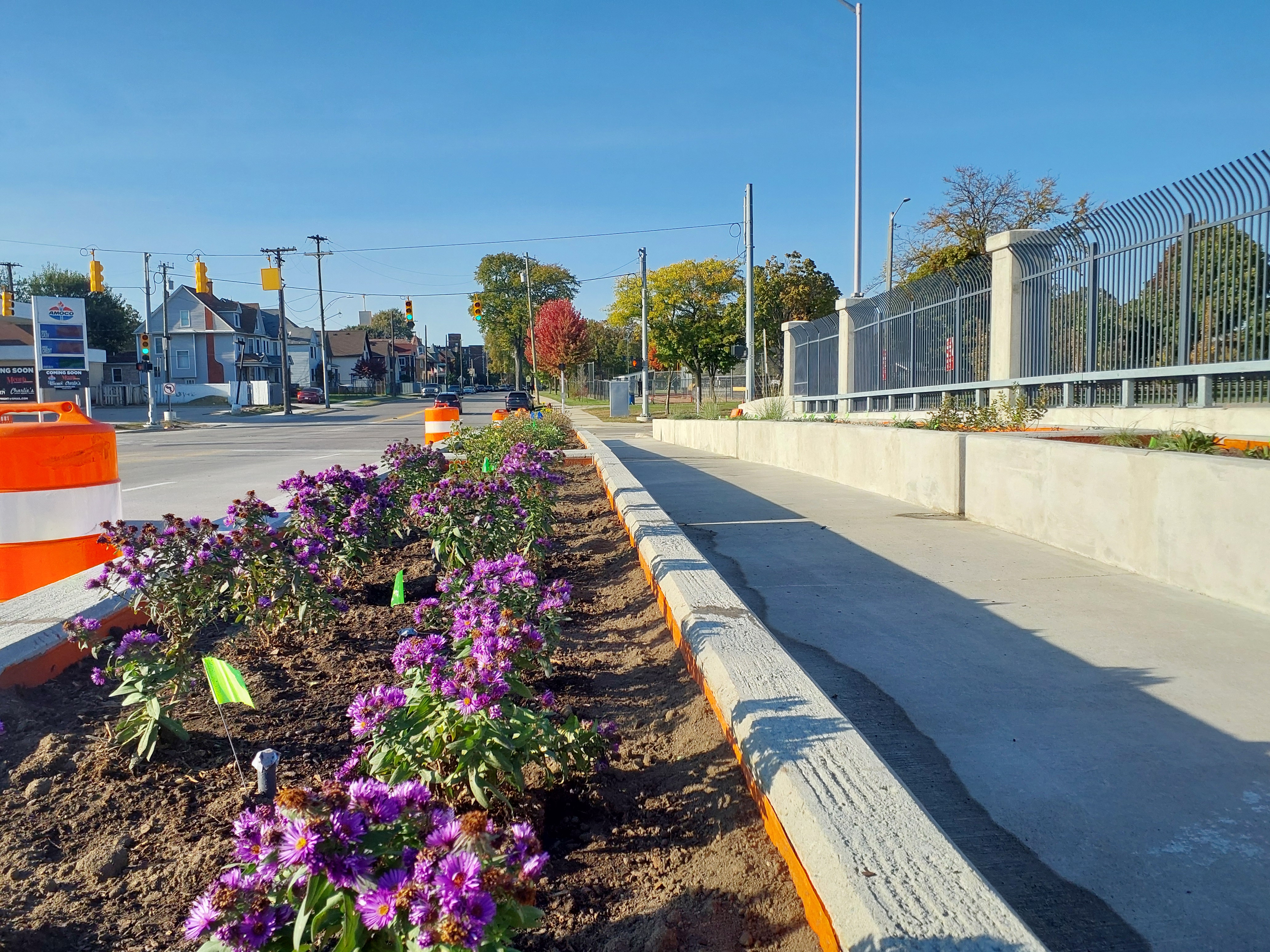
Drill rig set up to drill micro-pile
In preparation for the construction of the Gordie Howe International Bridge, a number of existing high-voltage lines that currently cross the Canadian Port of Entry (POE) must be relocated. Relocating these lines requires the construction of three new towers.
The towers range up to a height of 43 metres and must be built on solid foundations to support both the towers and cable tension. A process known as micro-piling is being used to stabilize the towers.
Observing work at one tower location, an area approximately 24 metres by 27 metres and 2 metres deep is dug. Once the excavation is complete, a concrete pad is poured to serve as a solid and level base to operate a drill rig and a mud filtering system.

Completed group of eight micro-piles
The drill rig uses a drilling head attached to the base of a round metal sleeve. The sleeve is bored into the bedrock which lies approximately 27 metres below the surface. Subsequent sleeves are then threaded together until they reach ground level. The metal sleeves are an integral part of the micro-pile and will remain permanently in the ground.
During the drilling process, high pressure water is used to flush and clear the hole of waste material. The waste is pumped to the surface and passes through a mud filtering system. The mud filtering system discards the solid material and places it into heaps to be hauled away for proper disposal. The water is recycled for use on subsequent holes.

Mud filtering system separating water and waste
Eight-metre-long pieces of threaded rebar are then mechanically inserted into the sleeves in each micro-pile hole. Additional lengths of rebar are joined together using a coupler until they reach the bedrock below.
The micro-pile sleeve containing the threaded rebar is then filled with grout that is pumped under pressure. The grout is specialized concrete that is fluid enough to fill any voids in the bedrock at the base of the micro-pile.
Each of the four tower legs are anchored with micro-piles.. Threaded bolts approximately 1.4 metres long are then connected to each of the micro-piles and then encased in a square concrete footing that is 2.74 metres by 2.74 metres by 76 centimetres thick concrete footing. Once the concrete footings have cured the individual tower legs are then secured to these bolts.
The above process is followed for the other two towers though with some varying dimensions.



